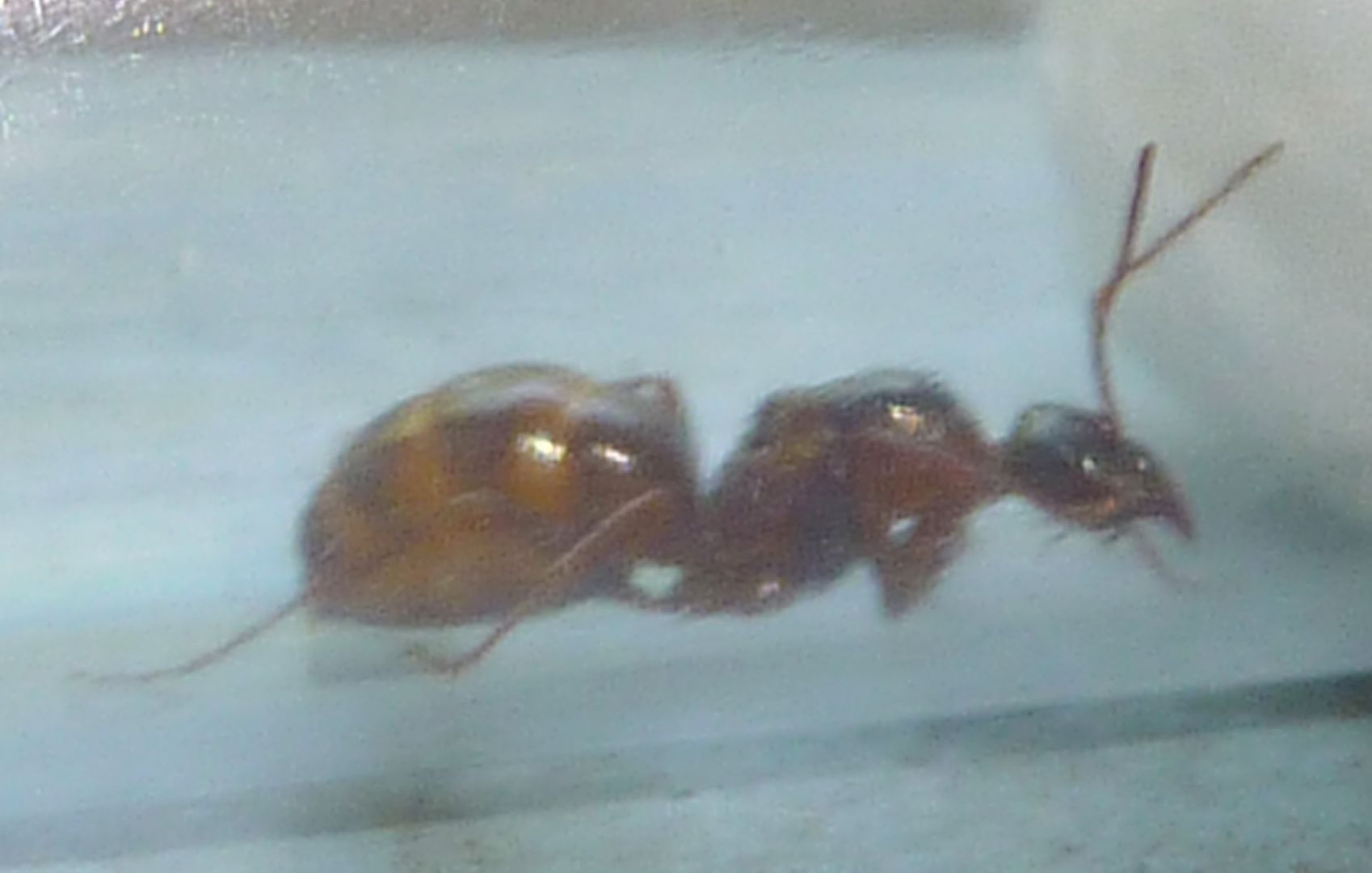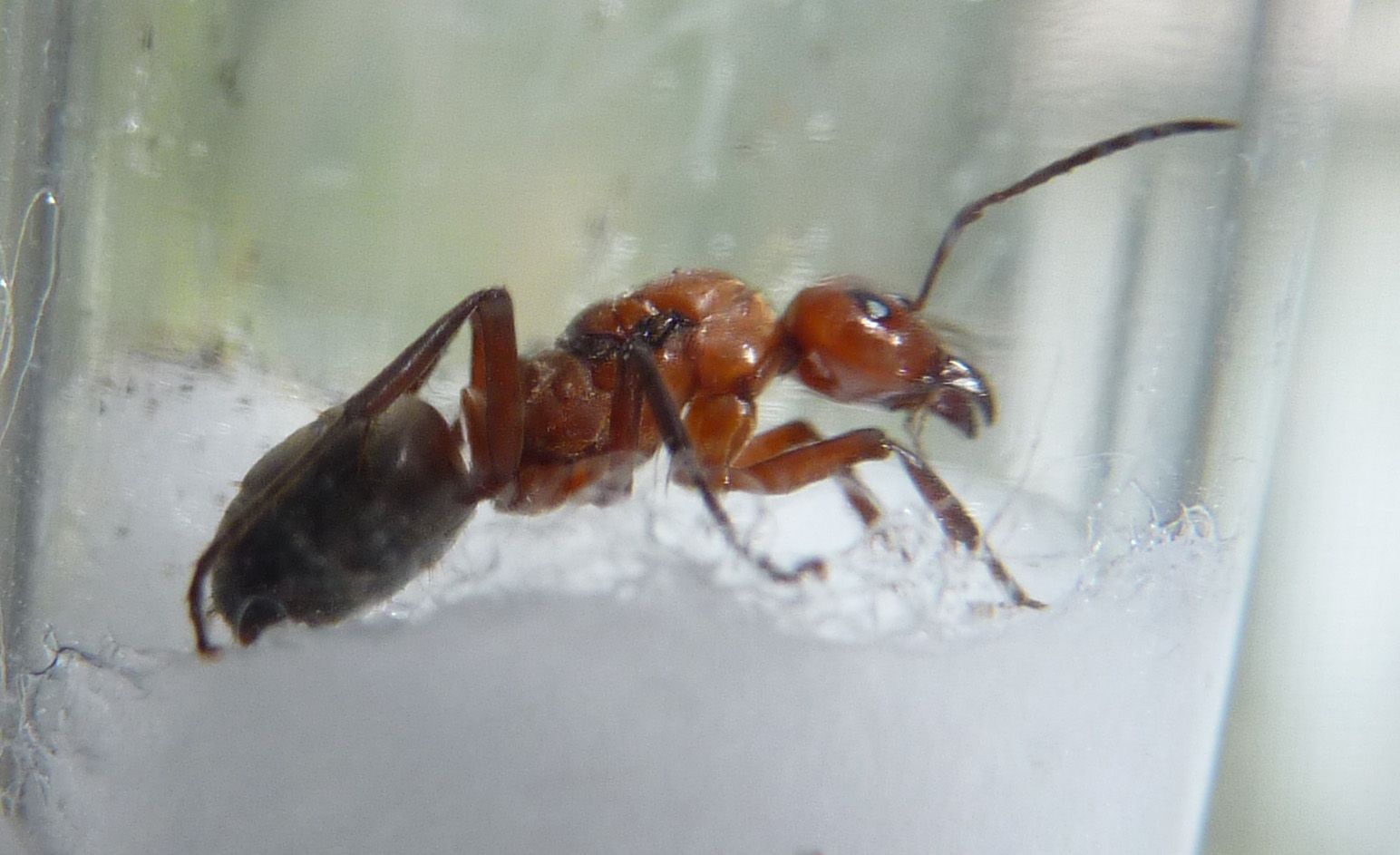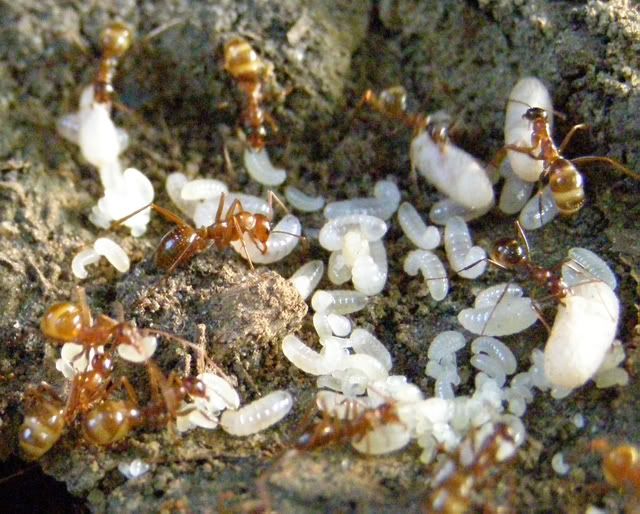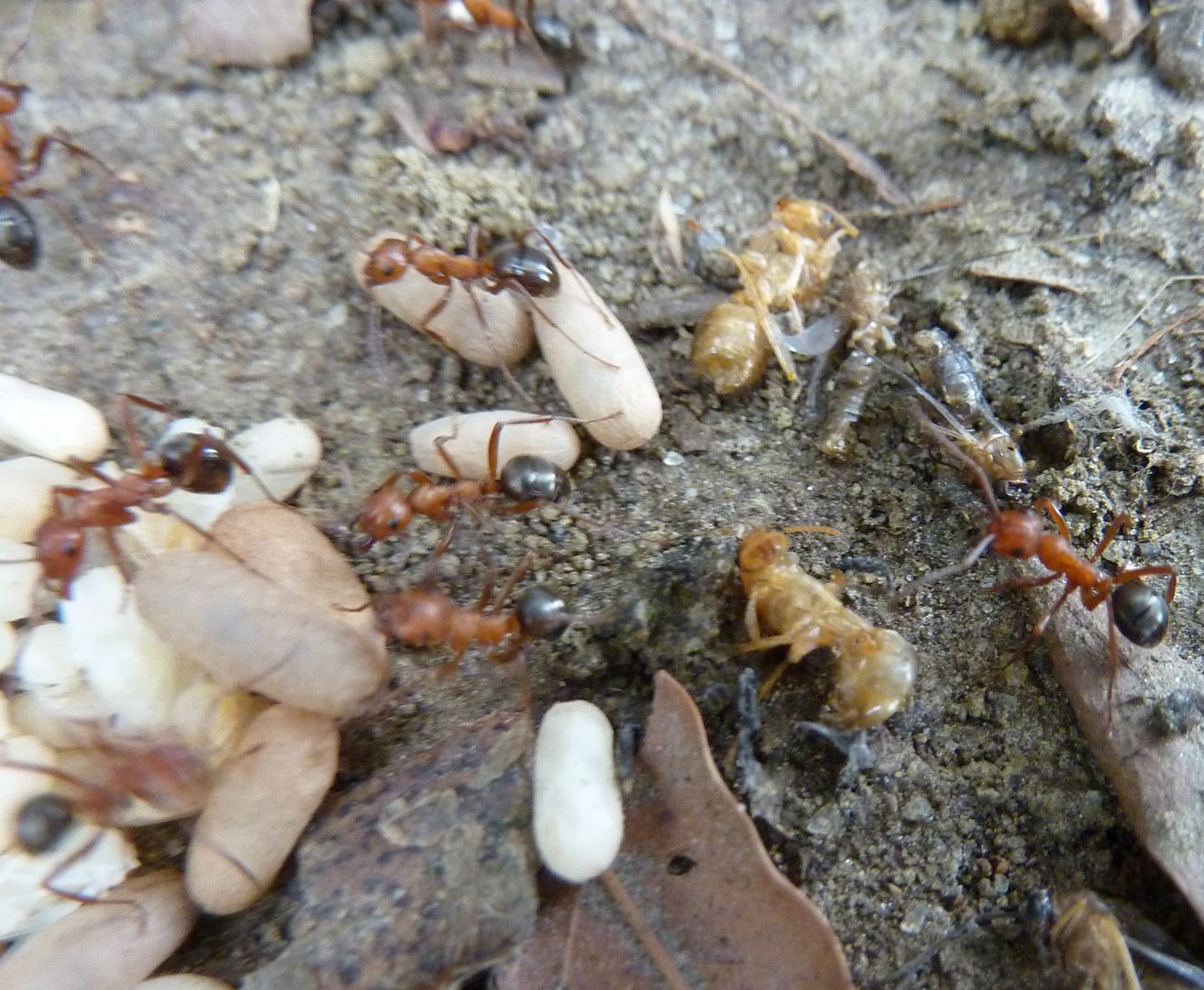Years of killing other queens for nest sites has eventually turned into killing queens with existing colonies and thus the social parasite was born. Social parasitic species don't need to leave the nest with as much food so the abdomen tends to be much smaller than the non-parasitic counterpart. They need to be aggressive too, to disembowel or decapitate their competition. So the head is larger and houses much stronger muscles to get the job done. Disemboweling doubles as the odors of the host queen splash onto the social parasite giving her the colony odor. This fools the host workers into raising brood to the parasitic species.
Some parasites stop here as we see in the genus Lasius. But some Formica take it to a whole new level. Formica pergandei (most likely identification) is one such species that's recently moved into my yard.
This picture of Formica pallidefulva was taken back in 2008. They've lived in my yard for a number of years and the colony is frankly a little boring. There are numerous colonies just like it in the area, and this one was doing great up until sometime in the past 5 days.
A colony of Formica pergandei have moved in, though I'm not sure yet if they've moved on yet. These ants are completely devoted to their host species, of which there are numerous. It's not enough for a queen to take over one colony of host ants. As their workforce dies they have to be replenished and other colonies have to be raided. Here is a quote from their description on Ant Web.
Throughout the eastern and Midwestern US, F. pergandei is the premier dulotic Formica in grasslands and open woodland habitats, utilizing virtually all other Formica species (except other F. sanguinea group species) as hosts. The host workers are obtained through regular nest-to-nest raids to steal brood of the host. Often, some stolen larvae are eaten, especially any pillaged sexual brood, but at least a portion of the pupae are reared by host workers in the F. pergandei nest. Raids start in the morning, slow down or cease in mid-day, then pick up again in the late afternoon. F. pallidefulva and F. subsericea are the prevalent host species in woodlands, and F. incerta or F. montana prevail as the host in drier and wetter grassland habitats, respectively. Any one, or often, a combination of these species may occur among the host workers, with lesser numbers of other species from the pallidefulva, fusca or even the rufa-microgyna groups also in the mixed population. In Lincoln Co., one F. pergandei nest contained a mélange of six host species, including (in order of decreasing relative abundance) F. pallidefulva, F. subsericea, F. biophilica, F. dolosa, F. incerta, F. obscuriventris, certainly the most species-rich, naturally occurring ant colony on record! Nest architecture, and more interestingly, total mixed colony population level, seem to closely approximate those of the host, such that F. pergandei parasitizing F. montana or F. subsericea typically lives in a mound with the typical mound structure and a population like those of these host species, while those parasitizing F. pallidefulva often live in a moundless soil nest or in rotten wood with the much lesser total numbers of workers, as does this latter host. F. pergandei workers in the mixed nest do not care for brood, gather sweets, or effectively contribute to nest maintenance.While observing them I got the impression that they'd moved into this nest. I would imagen a raid would have scattered somewhat when I disturbed them. Most of these were stationary and assisting with pulling the brood into the former F. pallidefulva nest. They don't always move into their target's nest. Often this kind of Formica will do a quick raid and rob the colony of it's brood, sometimes the host colony will even survive the attack.
Reproductive brood lay in ruins in the nest. The wings were mangled and parts of the developing ant were damaged.
A male F. pallidefulva (the black ant bottom center) has had his wings removed.
What they lack in basic essentials they more than make up for in aggression. They were even defending the nest. When disturbed several ants form a defensive stance. They have better eye sight and lock on to motion, only moving towards things that move. I had a fun time playing Red Light Green Light with this species. (Don't do that with Formica that spray acid as there's a serious risk you can go blind.) This type of behavior is an evolved defense against larger predators such as bears and opossums etc... that occasionally like eating ant brood.
Overall this seems like a fun addition to the normal array of ants found in my yard. I've lived here for 26 years and never come across this species. I can't help but feel it's to do with my fairly recent hobby of gardening with native plants. What's most exciting though is I only ever see this type of ant in the forested areas at the nature preserve I visit now and then. Hopefully I'll be able to post more on this species as they slowly devastate the colonies of Formica around the yard.








